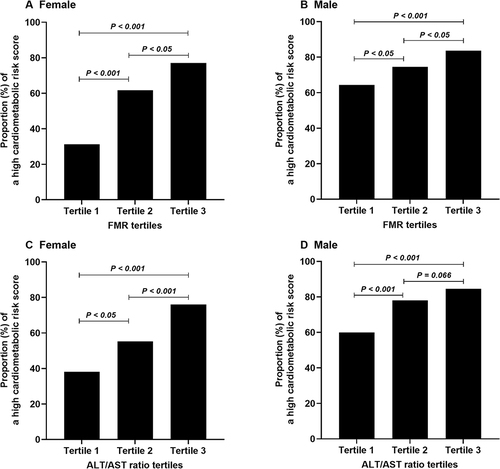Figures & data
Table 1 Baseline Characteristics of the Study Participants According to Cardiometabolic Risk
Figure 1 Proportion of a high cardiometabolic risk score according to tertile stratification of FMR in women (A) and men (B) and according to tertile stratification of ALT/AST ratio in women (C) and men (D).

Figure 2 Proportion (95% confidence interval) of each cardiometabolic risk score category in women and men. *P value=Chi-squared test within sex. **P value=Chi-squared test between sexes.

Table 2 Association Between Tertiles of Fat-to-Muscle Ratio and Cardiometabolic Risk Factors
Table 3 Association Between Tertiles of ALT/AST Ratio and Cardiometabolic Risk Factors
Figure 3 ROC curves of FMR and ALT/AST ratio for the detection of cardiometabolic risk in women (A) and men (B).

Table 4 Association of Different Subgroups with a High Cardiometabolic Risk Score According to the Cutoffs of Fat-to-Muscle Ratio and ALT/AST Ratio
